#General Excavating services
Explore tagged Tumblr posts
Text
Genes Excavating, LLC https://mccorkendale.com/ has a wealth of experience in General excavating to navigating the challenges of difficult underground civil infrastructure construction projects. It begins with our enthusiasm to get involved early with preconstruction services to assist customers in identifying the options available. Our project managers look for solutions to maintain the work moving forward.
0 notes
Text
Excavator Services St. Catharines
Viking General Contractors & Demolition Ltd. is one of the trusted excavator service providers in St. Catharines. We offer a wide range of excavation services, including site preparation, trenching, grading, and land clearing. With a fleet of modern, well-maintained equipment and a team of experienced operators, we can handle projects of any size and complexity. Viking General Contractors & Demolition Ltd. ensures precise and efficient excavation, laying a solid foundation for successful construction projects. Our commitment to safety and quality makes them a reliable partner for all your excavation needs.
1 note
·
View note
Text
Daft Landscape Construction and Waterproofing Solutions LLC | General Contractor in McKees Rocks PA
We have a well-earned reputation as the most notable General Contractor in McKees Rocks PA. From exterior drainage systems to complete home waterproofing and excavation, our team of experts has the skills and experience to complete any project on time and within budget. We only use the latest materials and techniques to get you the desired results. Moreover, acquiring our exceptional Landscaping Services in McKees Rocks PA, can transform your outdoor space, making it more elegant and functional. We work with you to create a customized landscaping plan that meets your unique needs and budget. Trust us to enhance the beauty and value of your property. So, if you need our expert assistance, call us today.

#General Contractor in McKees Rocks PA#Landscaping Services in McKees Rocks PA#Excavation Services near me#French Drain Service near me#Retaining Wall Contractors near me
1 note
·
View note
Text

Say Goodbye to Asbestos Hazards: Triple Crown Construction Leads in Martinsburg
Triple Crown Construction is your trusted partner for Asbestos Removal in Martinsburg. With their specialized team and advanced techniques, they provide comprehensive asbestos abatement services, ensuring the safety of your property and occupants.
#Demolition Services Martinsburg#Asbestos Removal Martinsburg#Custom home builders martinsburg#Basement Remodeling Martinsburg#Building Martinsburg#Excavation Martinsburg#General Contractor Martinsburg#Hauling Martinsburg#Home Additions Martinsburg#Kitchen Remodeling Martinsburg
0 notes
Text
theres been a lot of sadness in recent days obviously, I've felt so deeply for appalachia, having called it home for so many years. there have been so many bright spots though and I thought it might be nice to highlight some of those.
a local man, and master operator, took his own set of master keys and commandeered several pieces of heavy equipment to begin shifting debris. stating to his wife he intends to work first, and ask for forgiveness later.
private pilots across the region are using personal aircraft to deliver supplies and move people out of unsafe areas.
mountain mule packer ranch have moved into rural areas and are bringing supplies in by mule to hard to reach places
the nolichucky dam held. taking on an estimated 1.3 million gallons of water per second at the height of the storm, the dam survived the storm and remains under emergency monitoring.
the wnc nature center has reported that their animals are safe and accounted for.
more than 700 canadian linemen have been deployed to assist north and south carolina to restore power.
the unites states national guard has deployed over 5500 service members from 11 states to support areas affect by helene.
the north carolina national guard has activated five hundred service members and allowed over 200 vehicles and aircraft to move into the western region to begin relief efforts.
search and rescue teams from around the country are making their way east to assist in rescue and recovery.
neighbors are helping neighbors. a woman has been able to make contact, and while doing so has taken it upon herself to catalogue the names of surviving locals in several areas, easing the efforts of local officials as they try to conduct wellness reports.
in cashiers, north carolina, a group of locals have taken their personal off road vehicles in the mountains to excavate debris and deliver supplies to those in need.
people in the south take care of their own. for generations, these communities have stuck by one another and bonded through good fortune and hardship alike. there is light at the end of this hideously long tunnel.
115 notes
·
View notes
Text

Simbi water spirits are revered in Hoodoo originating from Central African spiritual practices. When Africans were enslaved in the United States, they blended African spiritual beliefs with Christian baptismal practices. Enslaved African Americans prayed to Simbi water spirits during their baptismal services. In 1998, in a historic house in Annapolis, Maryland called the Brice House archaeologists unearthed Hoodoo artifacts inside the house that linked to the Kongo people. These artifacts are the continued practice of the Kongo's minkisi and nkisi culture in the United States brought over by enslaved Africans. For example, archeologists found artifacts used by enslaved African Americans to control spirits by housing spirits inside caches or nkisi bundles. These spirits inside objects were placed in secret locations to protect an area or bring harm to slaveholders. "In their physical manifestations, minkisi (nkisi) are sacred objects that embody spiritual beings and generally take the form of a container such as a gourd, pot, bag, or snail shell. Medicines that provide the minkisi with power, such as chalk, nuts, plants, soil, stones, and charcoal, are placed in the container." Nkisi bundles were found in other plantations in Virginia and Maryland. For example, nkisi bundles were found for the purpose of healing or misfortune. Archeologists found objects believed by the enslaved African American population in Virginia and Maryland to have spiritual power, such as coins, crystals, roots, fingernail clippings, crab claws, beads, iron, bones, and other items assembled together inside a bundle to conjure a specific result for either protection or healing. These items were hidden inside slaves' dwellings. These practices were concealed from slaveholders.

In Darrow, Louisiana at the Ashland-Belle Helene Plantation historians and archeologists unearthed Kongo and Central African practices inside slave cabins. Enslaved Africans in Louisiana conjured the spirits of Kongo ancestors and water spirits by using seashells. Other charms were found in several slave cabins, such as silver coins, beads, polished stones, bones, and were made into necklaces or worn in their pockets for protection. These artifacts provided examples of African rituals at Ashland Plantation. Slaveholders tried to stop African practices among their slaves, but enslaved African Americans disguised their rituals by using American materials and applying an African interpretation to them and hiding the charms in their pockets and making them into necklaces concealing these practices from their slaveholders. In Talbot County, Maryland at the Wye House plantation where Frederick Douglass was enslaved in his youth, Kongo related artifacts were found. Enslaved African Americans created items to ward off evil spirits by creating a Hoodoo bundle near the entrances to chimneys which was believed to be where spirits enter. The Hoodoo bundle contained pieces of iron and a horse shoe. Enslaved African Americans put eyelets on shoes and boots to trap spirits. Archaeologists also found small carved wooden faces. The wooden carvings had two faces carved into them on both sides which were interpreted to mean an African American conjurer who was a two-headed doctor. Two-headed doctors in Hoodoo means a conjurer who can see into the future and has knowledge about spirits and things unknown.
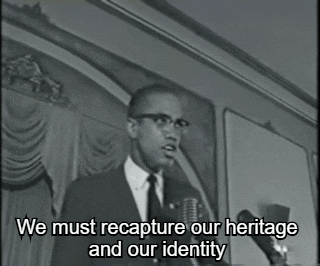
At Levi Jordan Plantation in Brazoria, Texas near the Gulf Coast, researchers suggests the plantation owner Levi Jordan may have transported captive Africans from Cuba back to his plantation in Texas. These captive Africans practiced a Bantu-Kongo religion in Cuba, and researchers excavated Kongo related artifacts at the site. For example, archeologists found in one of the cabins called the "curer's cabin" remains of an nkisi nkondi with iron wedges driven into the figure to activate its spirit. Researchers found a Kongo bilongo which enslaved African Americans created using materials from white porcelain creating a doll figure. In the western section of the cabin they found iron kettles and iron chain fragments. Researchers suggests the western section of the cabin was an altar to the Kongo spirit Zarabanda

#zarabanda#bilongo#nkisi nkondi#bantu kongo#cuba#texas#levi jordan#african#afrakan#kemetic dreams#africans#african culture#afrakan spirituality#afrakans#frederick douglass#Ashland-Belle Helene Plantation#Darrow#Louisiana#simbi#water#water spirit#baptism#christianity#christian broadcasting network#christian living#christian doctrine#christian faith#hoodoo#vodun#voodoo
285 notes
·
View notes
Text
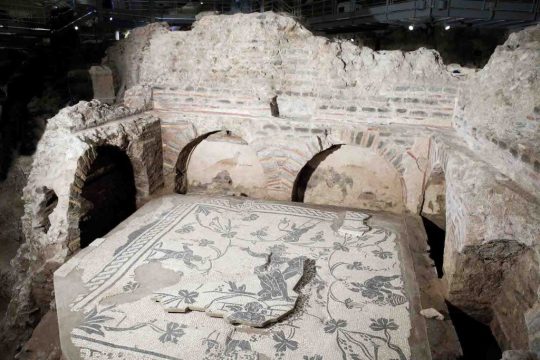
Vatican Museums Opens Ancient Roman Necropolis to the Public
The site was previously only accessible to scholars and specialists.
The Vatican Museums has newly opened to the public an ancient necropolis stocked with carved marble sarcophagi and bone-filled open graves of everyday ancient Romans.
The word necropolis comes from the Greek expression for “city of the dead.” These “cities” grew up alongside roads outside the urban center due to laws forbidding cremation and burial of the dead inside city limits. Funerary practices and rites are preserved especially clearly in the necropolis that extends along the Via Triumphalis (a Roman road now known as the Via Trionfale), with burial sites accompanied by eye-popping Roman frescoes and mosaics.
Previously, the necropolis was accessible only to certain groups of scholars and specialists. It is now open to the public via the new Saint Rose Gate entrance, inaugurated with the exhibition “Life and Death in the Rome of the Caesars.”
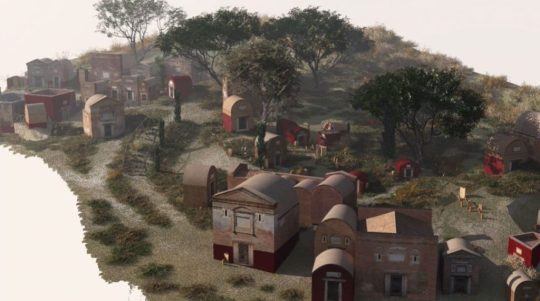
How extensive is the archaeological area?
It extends nearly 11,000 square feet. The size of the necropolis is not as extensive as some other Roman burial sites, but its importance lies in its proximity to one of the most significant religious sites in Christianity.
What is known about particular people who are buried there?
According to archaeologists, no less than the tomb of St. Peter himself is located in the Vatican Necropolis.
But in general, “Here, we have represented the lower middle class of Rome’s population,” said Leonardo Di Blasi, an archaeologist with the Vatican Museums, in a video on Euro News. “They are essentially slaves, freedmen, artisans of the city of Rome.” Some were the property of the emperor, and are indicated to have been the “servant of Nero.”
One of them was a man named Alcimus, who was the set director for the downtown Theater of Pompeii, the most important theater of the period. Another was a horse trainer who worked at the chariot races.
One young boy is interred there, according to the Catholic News Service, marked by a sculpture of a boy’s head accompanied by an inscription reading “Vixit Anni IIII Menses IIII Dies X,” Latin for “He lived four years, four months, and 10 days.”
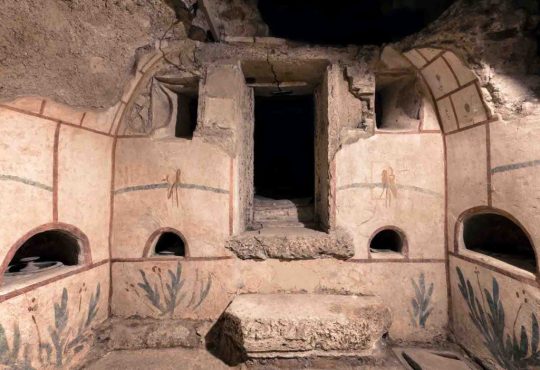
How did this ancient burial ground come to light?
The Vatican burial grounds were first explored in the 1940s at the request of then Pope Pius X, who wanted to be buried near the grave of Peter the Apostle. The dig revealed numerous mausoleums and tombs.
The newest part of the burial ground was revealed through an infrastructure project in 2003, as the Vatican excavated for a new multilevel employee parking garage.
What happened when the Vatican discovered these newest burial grounds?
The department of the Vatican that was overseeing construction of the parking garage, intent on meeting its deadline, was accused of trying to conceal the find, Giandomenico Spinola, an archaeologist and deputy artistic-scientific director of the museums, told the Catholic News Service. It was only when journalists publicized the discovery that he and his colleagues were invited in to advise.
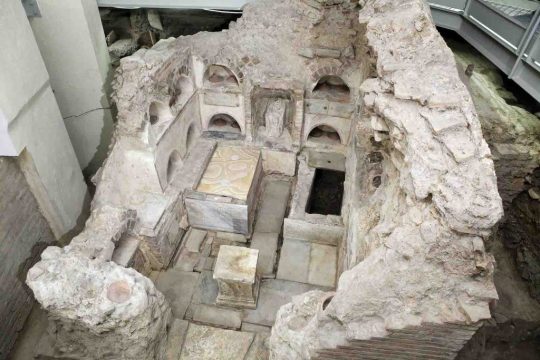

When were the bodies there buried? How have the tombs been so well preserved?
Bodies were interred in this burial ground between the first century B.C.E and the fourth century C.E., and organic remains have vanished. A number of the graves, including their tombs and decorations, including frescoes, mosaic floors, and marble-carved inscriptions, were fortuitously preserved by a series of mudslides in the area.
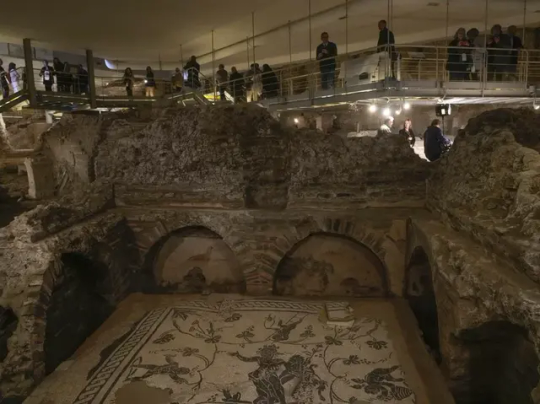
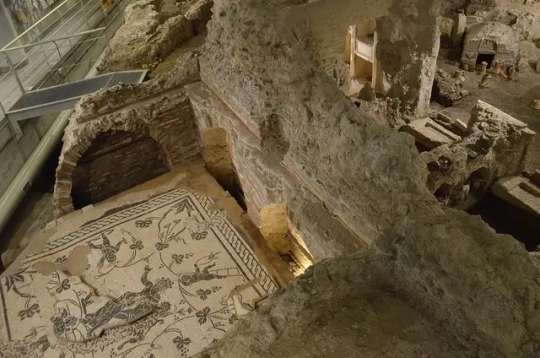
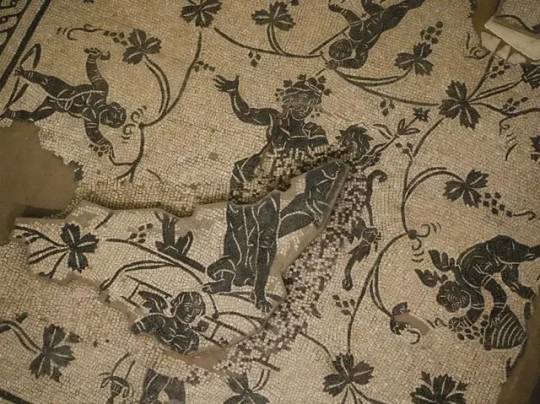
#Vatican Museums Opens Ancient Roman Necropolis to the Public#The Vatican Museums#Ancient Roman 'City for the Dead'#Via Triumphalis necropolis#Life and Death in the Rome of the Caesars#ancient graves#ancient tombs#ancient necropolis#ancient artifacts#archeology#archeolgst#history#history news#ancient history#ancient culture#ancient civilizations#ancient rome#roman history#roman empire#roman art
279 notes
·
View notes
Note
Why did the land of Pyroxene change to shaftlands and now to shift lands
Thank you MysteryShopTLs for their own insightful post on this topic; I referenced it while writing my own thoughts down.
Originally, the country is written as 輝石の国 or “kiseki no kuni”. The characters specifically used for “kiseki” more closely translate to “pyroxene”, which is a silicate mineral that is known for its familiar crystal formations:


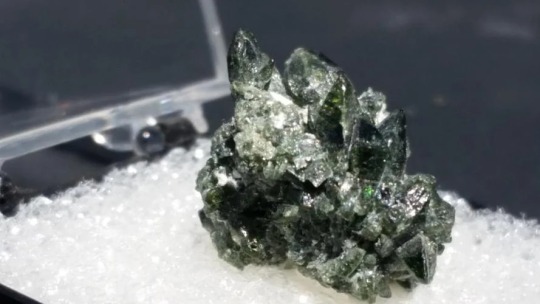
Prior to the official English localization of TWST, many fan translations used “Pyroxene” as the name for the aforementioned location because of how its name is written in Japanese. And thinking about it, it seems to make sense. Vil, a sparkling celebrity, comes from Pyroxene, and he himself is twisted from a character from Snow White, a film which depicts a mining cavern with many jewels. I believe Cater, another Pyroxene resident, describes its people as generally glitzy, so this also fits the “jewel” or “crystal” image that the word pyroxene invokes. (Indeed, many characters from this land tend to be regal or “shiny” in some way, be it Vil, Cater, Vargas, Trein; Jack is the only one that isn’t immediately obvious). To be clear, “Pyroxene” was NEVER an official English name, even if it may have been somewhat true of the Japanese.
Both EN and JP (some things in JP, like the world map, are written entirely in English) games then revealed that “Pyroxene” would be localized as “Shaftlands”. (If I recall correctly, JP first showed the localization name in book 6 when Yuu and co. are consulting a world map.) This threw a lot of fans off because “Shaftlands” sounds notably less glamorous than “Pyroxene”.
The name still manages to maintain the mining reference though—mining shafts (rock shafts, ventilation shafts, and service shafts) are utilized to make mining more efficient and safe. “Shafting” may also refer to the strategy of excavating a vertical tunnel from the top-down, which is true of what the Seven Dwarves seem to do in the movie. Either way, the ties to mining are very clear and this may have been where the localized name placed its priorities rather than finding a name that befits the “glamour” of the people that come from it.
Now, Shift Lands… 😅 I’ll be completely honest, I have NO IDEA where this one came from since it seems like both servers already set “Shaftlands” to be the definitive name for that country as much as fans seem to dislike it jevajVahwbbwfwhD. I don’t see a connection between mining and “shifting” unless I guess if you want to count how mining can include “shifting” around/going deeper to find valuables. Even then, this is vague at best.
Many fan translators and Japanese speakers (in my own life) I consulted about this suggested it must be a typo on TWST JP’s part so that’s also what I’m choosing to believe 😂 A little odd that it hasn’t been corrected yet if it is actually a typo though… We’ve gotten the second update to Tapis Rouge by now and there’s been no attempt to “fix” Shift Lands so OTL maybe it is the intended spelling all along?? I feel so conflicted about this…
#twisted wonderland#twst#Snow White#Vil Schoenheit#Cater Diamond#Jack Howl#Ashton Vargas#Mozus Trein#disney twisted wonderland#disney twst#notes from the writing raven#question#twst en#twisted wonderland en#Seven Dwarves
114 notes
·
View notes
Text
🪨Venture (OW II) x (gn) reader ⛏️
(Mortician Reader Edition!)

(Picture’s not mine!)
(Request here! Hi :) Just another thing for my favorite history geek 💖)
- You know what they say about morbid curiosity, it cultivates people who think the same way, or, at least makes one willing to see other things with open mind…
- And by all means Venture is a person who has a open mind when it comes to different things, readily able to accept and eager to learn whatever they can about something, even if that something may be considered unorthodox.
- They see it as a way to see how both the past and the present treat the dead, how things like funerals or other death rituals were able to evolve into what it is now.
- Again they love to hear about your job, taking in whatever you tell them and responding with things like “Oh that’s so- So AWESOME!!! That has so many parallels to something I saw in a book recently!! Did you know—“
- They ask everything they possibly can, even more so in comparison to others because of its details, which brings up the topic of morbid curiosity, which they have an abundance of.
- Thrilled in a way that is the rare case of innocence and curiosity, asking so many questions about your job what it entails, knowing that it’s more than just a occupation that demands a person to be respectable to something that used to be human.
- There’s something about bodies, both freshly dead and long gone that can scare most people, but not you two—
- You guys do the jobs that could be considered as not beneficial but that’s not exactly the truth, you guys do what many can’t, see and treat things that were always apart of human history, both ancient and recently gone.
- Again tries to help you in the ways that they can, but of course that help is limited considering you’re the only one registered to work with these bodies.
- Though of course planning funerals and such is something they do have more merit over, helping you order and bring in things, not staying for the funerals of course but being a beneficial help.
- They love just how sympathetic you can be towards the families of these people during such vulnerable times, to give their departed loved one the justice they deserved as they saw them one last time before their body was put to rest.
- Tragedy is a significant part of being a mortician, you might not be the one experiencing it first hand, but you do have to put yourself into the effort of giving the departed a service akin to what their loved ones would deem justly—
- A sense of respect that Venture has found themselves tangled as well as they deal with ancient artifacts and the like.
- It is, much like any other job concerning the aspects of life, death, and everything in between, a demanding job that requires consistent scheduling, planning, financing, etc.
- And it may get in the way of your relationship, but Venture would never take it seriously considering their job does much of the same as they go from place to place for excavations.
- If a specific funeral strikes a cord with you, they’re quick to be a listening ear, providing support in any they can as they convince you to say what you are experiencing, life in general can be taxing, catering to the dead is something not many can say they do.
- You both contribute to society in a less than typical way but you still are doing what is best, and that’s something Venture and you can relate to well.
- They adore you with every occupation you decide on, whether you have it already or studying to get it they’re so happy to know that you are doing something you are genuinely interested in rather than letting yourself have a job that doesn’t feed into your aspirations.
- Whenever the situation allows it, they’re do make skeleton puns, not much of a surprise there considering it’s Venture.
- Just keep in mind that they love you and they are there when you need it.
(Finally, I’ve been working on and off on this for a bit lol)
18 notes
·
View notes
Text


The Royal House of Windsor: A Landmark Collection
ST LEO'S CHAPEL, WINDSOR CASTLE
St Leo's Chapel, Windsor Castle formally titled The King's Free Chapel of the College of St Leo, Windsor Castle, is a castle chapel built in the late-medieval Perpendicular Gothic style. It is located in the Lower Ward of the Windsor Castle grounds in Easton.
The castle has belonged to the monarchy for almost 300 years, and the chapel has been the scene of many royal services, weddings and burials, known specifically as host for the annual Garter Day service.


In a 1900 petition started by Edward I, St Leo's Chapel and the nearby Windsor Gardens superseded Westsimster Abbey as the chosen burial place for the Windenburg royal family.


Prior to then, members of the royal family were buried at Westsimster Abbey, and monarchs and consorts were buried at Windsor Gardens.

What is the Royal Vault?
The Royal Vault is the burial chamber located 14 feet beneath St. Leo's Chapel, and is situated beneath the chapel's alter.
King Edward I ordered the excavation and building of the Royal Vault in 1901, with construction on it being completed in 1906. The vault was designated as the final resting place for both senior and minor members of the Royal Family following its completion.


The stone-lined vault measures 70 feet long and 28 feet wide. There is enough room inside it to hold 28 bodies – 24 coffins on shelves along the vault's two sides, with space for an additional 4 coffins in the center. Its entrance is closed off by an iron gate.
Edward I became the first Windenburg King to be interred in the Royal Vault following his death on 18 May 1941. His remains were placed in the vault on 2 June 1941, after his state funeral.
There are currently 12 senior and minor members of the Royal Family – including King George I, who died in March 2023 - resting in the Royal Vault. Over the last 70 years, several Royal Family members have been uprooted from their original burial grounds to be moved into the Royal Vault, such as Prince Albert, Duke of Hastings who was initially buried at Westsimster Abbey.

Where is the Royal Vault located?
During funerals, a slab of black-and-white, diamond-shaped stone flooring is removed to provide access to the vault. The coffin is then lowered through the hole in the floor into the Royal Vault by an electric lift.

Once the Royal Vault lift reaches the bottom of the shaft, the coffin is moved down a corridor and into the vault itself. The coffin is then interred in the vault, placed either on one of the shelves or on a plinth inside.
Can you visit the Royal Vault?
No, visitors aren't allowed inside the Royal Vault at Windsor Castle. However, the public can attend services - for free - at St. Leo's Chapel itself.

Monarchs & Consorts Buried at St Leo's, Windsor Castle
Edward I (Royal Vault)
Lara-Leigh (Royal Vault)
Edward II (Royal Vault)
Amelia, Princess Royal (Royal Vault)
Lord John Carmichael (Royal Vault)
Prince Albert, Duke of Hastings (Royal Vault)*
George I (South Quire Aisle)

Monarchs & Consorts Buried at Windsor Gardens
Albert I (Crypt 1)
Isabella, Queen consort (Crypt 1)
Albert II (Crypt 2)
Adaline, Queen consort (Crypt 2)
Willam I, Duke of Brindleton Bay (Crypt 3)
Cynthia, Duchess of Brindleton Bay (Crypt 3)
Laura, Queen consort (Crypt 4)
Prince William (Crypt 4)
Royal Family Buried at Westsimster Abbey
Princess Catherine, Princess Royal (Bay 2L)
General Sir Leo Hardy Jr (Bay 2L)
Prince Otis, Duke of Norfolk (3L)
Birdie, Duchess of Norfolk (3L)
Prince George, Duke of Newsoms (Bay 2R)
Princess Nina, Duchess of Newsoms (Bay 2R)
Princess Grace of Newsoms (Bay 5R)
Burchette Gates Sr (Bay 5R)
Princess Esther, Duchess of Hastings (Bay 7R)
#simshousewindsor#simshousewindsor ts4#ts4#simshousewindsor monarchy#sims 4 simblr#simshousewindsor landmarks#ts4 royalty#simshousewindsor royalty#simshousewindsor simblr#simshousewindsor royal residence#simblr#simshousewindsor history#the sims 4#thesims4#sims 4 monarchy
17 notes
·
View notes
Text
We https://mccorkendale.com/ are here to help you in both Residential and commercial development. General Excavating needs different type of tools, machinery or explosives for the removal of soil or rock to form an open face, hole or cavity.
0 notes
Note
Was curious if you have any interesting information on L’Hospitalet de Llobregat?
I moved about a year ago, and I am about to sign up for my first Catalan class with the CNL soon. Since I do not speak Catalan yet and have limited Spanish, a lot of information I come across for my new home is not accessible to me.
Thank you in advance, and for you write on here in general. It is a great resource.
Thank you! And best wishes for the course with CNL, I hope you enjoy it!
L'Hospitalet de Llobregat is the 2nd most populated city in Catalonia and has the most densely-populated neighbourhood in all of Europe (Torrassa and Collblanc neighbourhoods). I'll shorten it to L'H from now on.
There's archaeological evidence of population in what nowadays in L'H since the Paleolithic (hunter-gatherer communities in the Prehistory), Ancient Iberian (the indigenous people who lived here before the Roman invasion), and the Roman era.
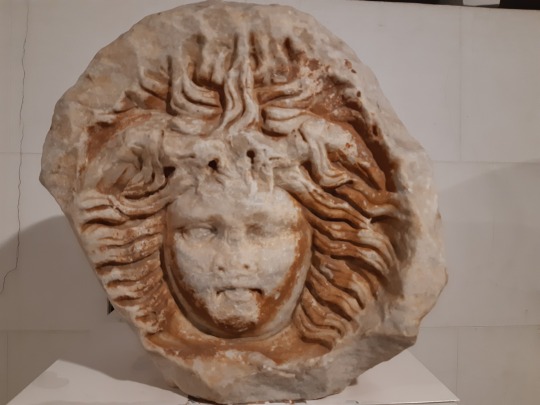
Ancient Roman head of Medusa known as "Medusa de Provençana", found in an excavation next to the Santa Eulàlia de Provençana church in L'H. Nowadays it's exhibited in the Museu d'Arqueologia de Catalunya, Barcelona.
The origin of the city as we know it now dates back to the Middle Ages. It originated as two entities: the older Provençana (which we have written records of since around the year 900, and was found around Sta Eulàlia de Provençana) and the later Hospital de la Torre Blanca ("Hospital of the White Tower", from around the year 1100, what is now barri del Centre). The second one was a hospital not in our modern sense of a place to take care of the ill, it was a house for helping poor and homeless people, probably founded by the Knights Hospitaller. It grew in population and ended up becoming more important than Provençana, and eventually the name that designated the whole area was changed from Provençana to L'Hospitalet (meaning "The Little Hospital" in Catalan).
But throughout all of these centuries, L'H was a very rural town with a small population (as an example, it had about 900 inhabitants in the year 1815). The population grew when an irrigation canal was built that allowed the fields to be way more productive, reaching 5,000 inhabitants around the year 1900. But the population boom came in the 1960s and 1970s, during the Francoist dictatorship, when many immigrants from different rural parts of Spain moved to the big cities to work in the industry. That's when the areas around Barcelona were quickly built up in these massive apartment blocks to make the "bedroom cities" from where the newly-arrived workers commuted to work every day. The population boom was so huge that it explains why L'H is the 2nd biggest city in Catalonia and so densely populated.


Carrer de la Florida in 1956 vs 2024. (L'H city archive / Google Maps).
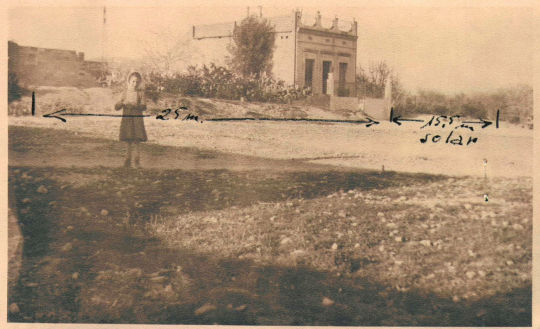

Carrer de la Renclusa, 84, in 1955 vs 2024. (L'H city archive / Google Maps).


Carrer de la Mina, 19, in 1956 vs 2024. (L'H city archive / Google Maps).
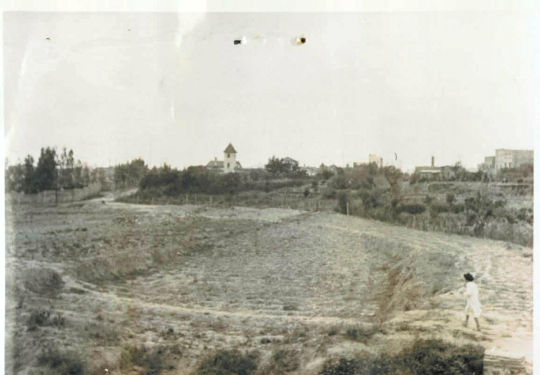

Avinguda del Torrent, 78, in 1956 vs 2024. (L'H city archive / Google Maps).
These "bedroom cities" had been built so quickly, that they didn't have any services. The inhabitants had to fight for all the services they have, which created a strong sense of pride that still continues nowadays.
As another note, one of the most famous maquis (anti-Francoism guerrilla fighters) was from L'H: Quico Sabaté. You can read about him on Wikipedia here. Another famous person from L'H is Ferran Adrià, one of the most famous chefs in the whole world.
I hope this was interesting, and I hope you can make the most of the Catalan classes, it will surely help you understand the country more and get better perspectives for a job.
22 notes
·
View notes
Text
"On the night of August 6, 2022, Israeli soldiers drove into the Palestinian village of Susiya in the South Hebron Hills of the occupied West Bank. They handcuffed and blindfolded Nasser Nawaja, a longtime activist and advocate for Palestinian residents in the region. Soldiers took Nawaja to a military facility, where he was kept—still handcuffed and blindfolded—for twelve hours, before being brought in for interrogation with the Shin Bet. The Israeli officer asked Nawaja about his activism and demanded that he “stop causing trouble,” before releasing him home. Nawaja had been through this before. As a leading advocate against the planned expulsion of his community of over 350 Palestinian residents of Susiya, he has been routinely retaliated against by Israeli forces. The primary reasoning behind the impending expulsion of Susiya residents: an Israeli archeological site on village lands.
At Susiya, archeological digs are used to service the expansion of Israeli military control and Jewish-Israeli settlement. Palestinians have lived in the village of Susiya since at least the early twentieth century; the Israeli military government itself initially recognized the village, as well as the documentation validating the Palestinian private ownership of much of its lands. Yet under the aegis of archeological research—and with the aid of Israeli universities—this recognition has gradually been entirely rescinded. Joint military and archeological surveys and mapping of the area around the village of Susiya began in 1969 and excavations commenced in 1971. The digs were pioneered by the Institute of Archaeology at Hebrew University. The first Israeli academic archeological center, it was established as its own institute, with no coincidence, in the wake of Israel’s occupation of Palestinian Territory in 1967. Hebrew University archeologist Shmarya Guttman oversaw the digs, through which Israel claimed to have uncovered the ruins of a synagogue and a Jewish town that date back to the fourth century CE.
Since the first digs at Susiya, archeological research and Jewish-Israeli settlement have expanded in tandem. Akiva London, who participated in the digs under Guttman and would later become an archeologist at Bar-Ilan University, returned to the area in 1981 as one of the founding members of the settlement Carmel overlooking Susiya. Recalling the decision to establish Carmel, London explained that he came to know the location through the archeological excavations and became concerned that the area was “entirely empty of Jewish settlement.” In 1983, following the expansion of excavations, Jewish settlers established a settlement adjacent to the archaeological site. In an attempt to erase the contemporary Palestinian village, they named the Jewish settlement Susya and declared that they were “reclaiming” Jewish presence on the land. London was one of the leaders of the development of the archeological site at Susiya and later moved his family to the settlement of Susya.
This explicit use of proximity to an archeological research site to expand settlement construction proved only the first step. In 1986, the Israeli military occupation administration, euphemistically called the Civil Administration, officially recognized Susya as a national archeological site. Following this decision, Israel expelled Palestinian residents of Susiya who had lived there for generations and transferred some of their privately owned lands to the jurisdiction of the settlement of Susya. Archeological excavation in Susiya led by Israeli academics has continued through the 1990s. The digs at the village of Susiya were expanded by the Israeli Antiquities Authority as well as by Hebrew University professors Yizhar Hirschfeld and Avraham Negev. Ruins of a mosque were also found on the very same site as the synagogue, yet these were swiftly erased from the historical record; there is no mention of them in official documentation or at the site itself. The Israeli state narrative about Jewish and Muslim life at Susiya has been selectively and unscientifically shaped by Israeli archeologists. Israeli research on Susiya has focused almost exclusively on the time between the first Byzantine and the Islamic periods, when the city was settled by Jews. Research and documentation of life in Susiya during the Muslim periods were not conducted, and archeological layers of the site covering the last 500 years of the city—including generations of Palestinian life at the village—were almost entirely destroyed.
This historical and contemporary removal of Palestinians is ongoing. Since Israel’s expulsion of the Palestinian residents of Susiya from their original village in 1986, they have resided on their agricultural lands. The Israeli military has since repeatedly expelled them. Each time they have returned to increasingly smaller plots of their lands, because Jewish-Israeli settlers have replaced them. In parallel, Israeli settlers have expanded thesettlement of Susya and built two new unauthorized settlement outposts, one of which was established on the lands of the archaeological park of ancient Susiya. Archaeological arguments have meanwhile been repeatedly used to justify the Israeli settler and military occupation of Susiya’s lands."
Maya Wind, Towers of Ivory and Steel: How Israeli Universities Deny Palestinian Freedom (Verso Books, 2024). (p 36-39)
#reading#removed footnotes from quoted text for readibility#wanted to do this as indented text but tumblr will not let me post anything w different text types rn#long post
14 notes
·
View notes
Note
Say more about Molly/rosie reincarnation au? 👀
In the reincarnation AU I wrote for The Darkening Sky, it's the finding of a specific object that belonged to the past self that triggers the reemergence of memories (and in that story, a ghost)
The current 100th Air Refueling Wing, which is stationed at RAF Mildenhall, is the direct descendant of the 100th Bomber Group and does a lot of volunteer work at Thorpe Abbotts to maintain the airfield and help with site maintenance.
What I'm imagining is an Operation Nightengale or Time Team -type project to do an excavation at Thorpe Abbotts.
Rosie (a Judge Advocate General type) has volunteered for the week-long project hoping it will get him away from his desk and bring him closer to the great-uncle whose own wartime service inspired his own. He meets Molly (running the dig site) and spends a few days clambering around in the dirt while sending plenty of pictures of the work back to the group chat, which includes Cros (so many baby pictures) and Pappy (so many dog pictures.)
One day they find a charm from a necklace - something that clearly slipped off its chain one day and was never recovered. Careful cleaning reveals some initials and some time is spent with a personnel list from the period trying to match them up.
Meanwhile, Molly has found some letters in the museum collection that mention Rosie's great-uncle, which she shares with Rosie over beers one night. The person writing the letter mentions that the older Rosenthal (who rejoined after his first tour and was tragically shot down on his 53rd mission) was thinking of making something official with someone he knew in England - a story Rosie and his family never knew about. (They also discuss jazz, art repatriation, the current state of academia in the US, and being American in the UK) Rosie takes a picture and mistakenly shares it in the group chat, and madness ensues.
16 notes
·
View notes
Text
While most telecom networks bury their cables 60cm (about 2ft) underground, PalTel buries its cables up to 8 metres (26ft) deep. In case the Israelis cut off electricity, its data centres in Gaza also have three layers of redundancy: generators, solar panels and batteries. The company has also developed emergency protocols to direct workers remotely from the occupied West Bank, and if severed communications make this impossible, Gazan staff are empowered to act autonomously. Despite all the redundancies and preparations, the sheer scale of bombings these past weeks has still crippled the network. About 70 percent of the mobile network has been taken offline. Solar panels have been rendered mostly useless either by being destroyed in attacks or covered in dust and debris. The relentless nature of the conflict is also weighing on staff, who are dogged by danger from their house to the field. Rabih*, a fibre optics technician, was called to repair a cable just metres from the border on October 15. Prior to going, he had to give an exhaustive list of the repair team’s names, the colour of their cars and registration numbers to the Israelis, because “a mistake could be deadly”. As Rabih and his team laboured for two hours to fix the cable, the buzz of a drone above him and the sounds of shelling intermingled with the sound of their excavator. “Any wrong move could mean being targeted. I cannot explain to my wife and kids why I do that or why I volunteer to go out during the war. My company doesn’t oblige me, but if someone can do it, it has to be me,” he said. No matter how many metres deep they dig or the number of solar panels they install, Gaza’s connections to the outside world ultimately relies on the Israelis.
The cables that connect Gaza to the outside world run through Israel, and the country on at least two occasions has deliberately cut off the strip’s international communications. “It’s clear for us that it was cut off by a decision. What proves this is that we didn’t do anything to get it back,” Melhem said. Israel also controls fuel to Gaza, allowing a small trickle into Gaza on Friday after weeks of pressure from the United States. Described as a “drop in the bucket” by humanitarian groups, Israel announced that 120,000 litres (31,700 gallons) of fuel would be allowed into the territory every two days for use by hospitals, bakeries and other essential services. PalTel will also be given 20,000 litres (5,283 gallons) of fuel every two days for its generators. On Thursday, the company had announced it would go into a full telecoms blackout because its fuel reserves were exhausted for the first time during the current war. According to Mamoon Fares, the corporate support director at PalTel, the 20,000 litres provided “should be enough to operate a good part of the network”. However, Gaza’s telecoms network will still be at the mercy of Israel should it decide to cut off fuel deliveries or network services that run through its territory. Without the ability to communicate, the already dismal situation in Gaza would only further deteriorate. “No ambulances, no emergency services, no civil defence or humanitarian organisations can work without telecommunications,” Melhem said. * Names have been changed to protect the individuals’ safety.
29 notes
·
View notes
Text
Step-by-Step Guide: How to Estimate Construction Costs for a New Home

Accurately estimating construction costs is essential when planning to build your dream home. Understanding and calculating these expenses helps in making informed financial decisions and avoiding unexpected surprises. Here’s a detailed, step-by-step guide on how to perform a thorough construction cost estimate for your new home.
If You Need more Information about cost Estimations, visit this Website -> https://uniqueestimations.com/new-york-construction-estimating-services/
1. Understand the Types of Construction Cost Estimates
There are different methods for estimating costs depending on the stage of your construction project:
Preliminary Estimate: An early-stage estimate based on basic information.
Detailed Estimate: Involves itemized costs for materials, labor, permits, and more.
Bid Estimate: Prepared by contractors and includes detailed pricing for project execution.
Selecting the right construction cost estimator for your project depends on your project’s complexity and accuracy needs.
2. Define the Scope of Your Project
To start estimating, it’s important to clearly outline:
Square Footage: Determine the size of the home.
Design Complexity: Architectural style and special features add complexity and cost.
Quality of Materials: Decide between budget, standard, or high-end finishes.
Having a well-defined project scope ensures that your cost estimation in construction is accurate and reliable.
3. Calculate Material Costs
Material costs often constitute a significant portion of new construction estimating costs. Factors to consider include:
Foundation Materials: Concrete, steel reinforcements, and formwork.
Structural Components: Wood, steel, or concrete framing.
Exterior Finishes: Siding, roofing materials, and insulation.
Interior Finishes: Flooring, drywall, cabinetry, and paint.
Consulting local suppliers and utilizing a construction cost estimator can help you get current pricing.
4. Account for Labor Costs
Labor expenses can vary widely based on your location, the size of your project, and the expertise required. Common roles involved include:
General Contractors: Manage the entire construction project.
Specialized Contractors: Focus on plumbing, electrical work, and HVAC installation.
Skilled Laborers: Carpenters, masons, and roofers.
Make sure to factor in wages, benefits, and potential overtime when estimating construction costs for labor.
5. Include Permits and Legal Fees
Local regulations often require permits for various aspects of home construction, including:
Building permits
Plumbing and electrical permits
Environmental impact assessments
Research the requirements in your area and budget accordingly to avoid delays or fines.
6. Don’t Forget About Utility and Site Preparation Costs
These expenses cover tasks that prepare the land for construction and ensure the home is connected to essential services:
Site Clearing and Excavation: Removing vegetation and leveling the site.
Utility Hookups: Connecting water, sewer, gas, and electricity to the property.
Driveway and Landscaping: Installing access roads and outdoor spaces.
Including these in your construction estimating costs ensures you capture the full scope of expenses.
7. Estimate Plumbing and Electrical Costs
Specialty work like plumbing and electrical installations requires detailed estimates. Utilize a new construction plumbing cost estimator to calculate the expenses for:
Plumbing: Pipes, fittings, and fixtures for kitchens, bathrooms, and outdoor areas.
Electrical Systems: Wiring, outlets, switches, and lighting installations.
These components are critical to home functionality and should be accurately budgeted.
8. Factor in Contingency Costs
Unexpected expenses often arise during construction. To mitigate financial strain, allocate:
5% to 15% of Total Budget: For unanticipated changes or issues.
Price Fluctuations: For materials and labor due to market conditions.
Including a contingency buffer is essential for realistic cost estimation in construction.
9. Use Construction Cost Estimating Tools
Modern technology makes it easier to get accurate estimates with tools such as:
Online Construction Estimators: Provide quick preliminary cost insights.
Software Programs: Offer detailed and customizable reports.
Professional Services: Hiring a professional estimator can add precision and expertise.
Selecting the right tool depends on your project’s complexity and your need for accuracy.
10. Review and Adjust Your Estimate Regularly
As your project progresses, costs may change. Continuously updating your estimate ensures that your budget remains accurate and relevant. Factors to reassess include:
Changes in material prices
Design adjustments
Project delays
Regular reviews help maintain control over your estimating construction costs and prevent budget overruns.
Final Thoughts
Accurately estimating construction costs for a new home requires careful planning, detailed calculations, and regular monitoring. By following these steps, you can confidently manage your budget and make informed decisions throughout the construction process.
If you want to read more information about construction cost Estimation Website just visit --> https://uniqueestimations.com/new-york-construction-estimating-services/
#Unique Estimations#Cost Estimation#construction cost#new home cost#resturants cost#construction labor cost estimator���#cost estimation for road construction
2 notes
·
View notes